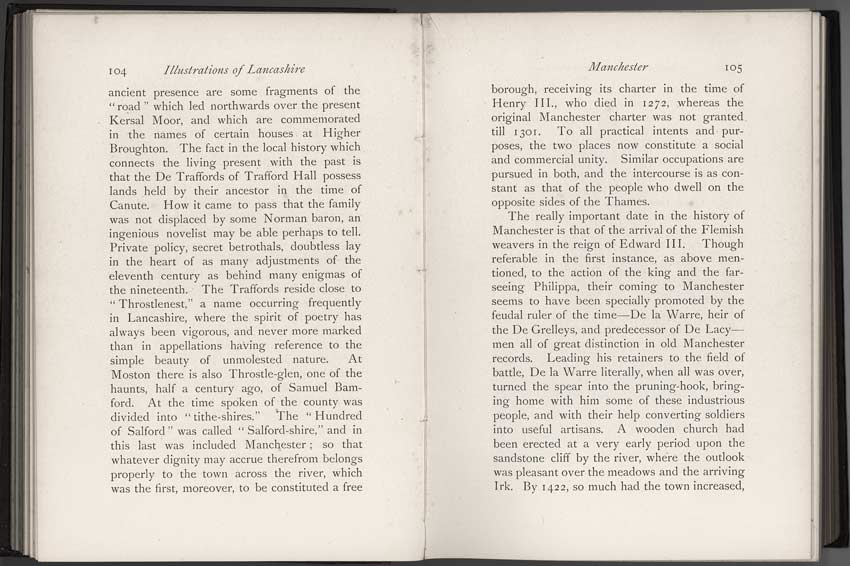
Scan and page transcript from:
LANCASHIRE - Brief Historical and Descriptive Notes
by Leo H. Grindon
Pub. 1892
pages 104-105 |
104 Illustrations of Lancashire ancient presence are some fragments of the "road" which led northwards over the present Kersal Moor, and which are commemorated in the names of certain houses. at Higher Broughton. The fact in the local history which connects the living present with the past is that the De Traffords of Trafford Hall possess lands held by their ancestor in the time of Canute. How it came to pass that the family was not displaced by some Norman baron, an ingenious novelist may be able perhaps to tell. Private policy, secret betrothals, doubtless lay in the heart of as many adjustments of the eleventh century as behind many enigmas of the nineteenth. The Traffords reside close to "Throstlenest," a name occurring frequently in Lancashire, where the spirit of poetry has always been vigorous, and never more marked than in appellations having reference to the simple beauty of unmolested nature. At Moston there is also Throstle-glen, one of the haunts, half a century ago, of Samuel Bamford. At the time spoken of the county was divided into "tithe-shires." The "Hundred of Salford " was called "Salford-shire," and in this last was included Manchester; so that whatever dignity may accrue therefrom belongs properly to the town, across the river, which was the first, moreover, to be constituted a free |
Manchester 105 borough, receiving its charter in the time of Henry III., who died in 1272, whereas the original Manchester charter was not granted till 1301. To all practical intents and purposes, the two places now constitute a social and commercial unity. Similar occupations are pursued in both, and the intercourse is as constant as that of the people who dwell on the opposite sides of the Thames. |
